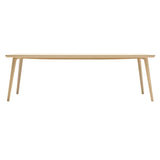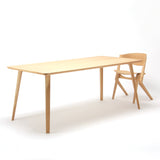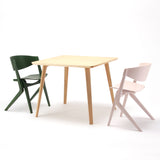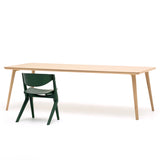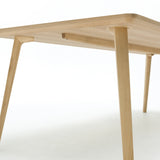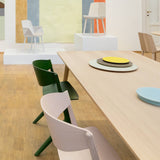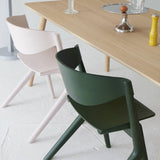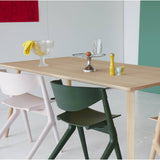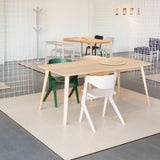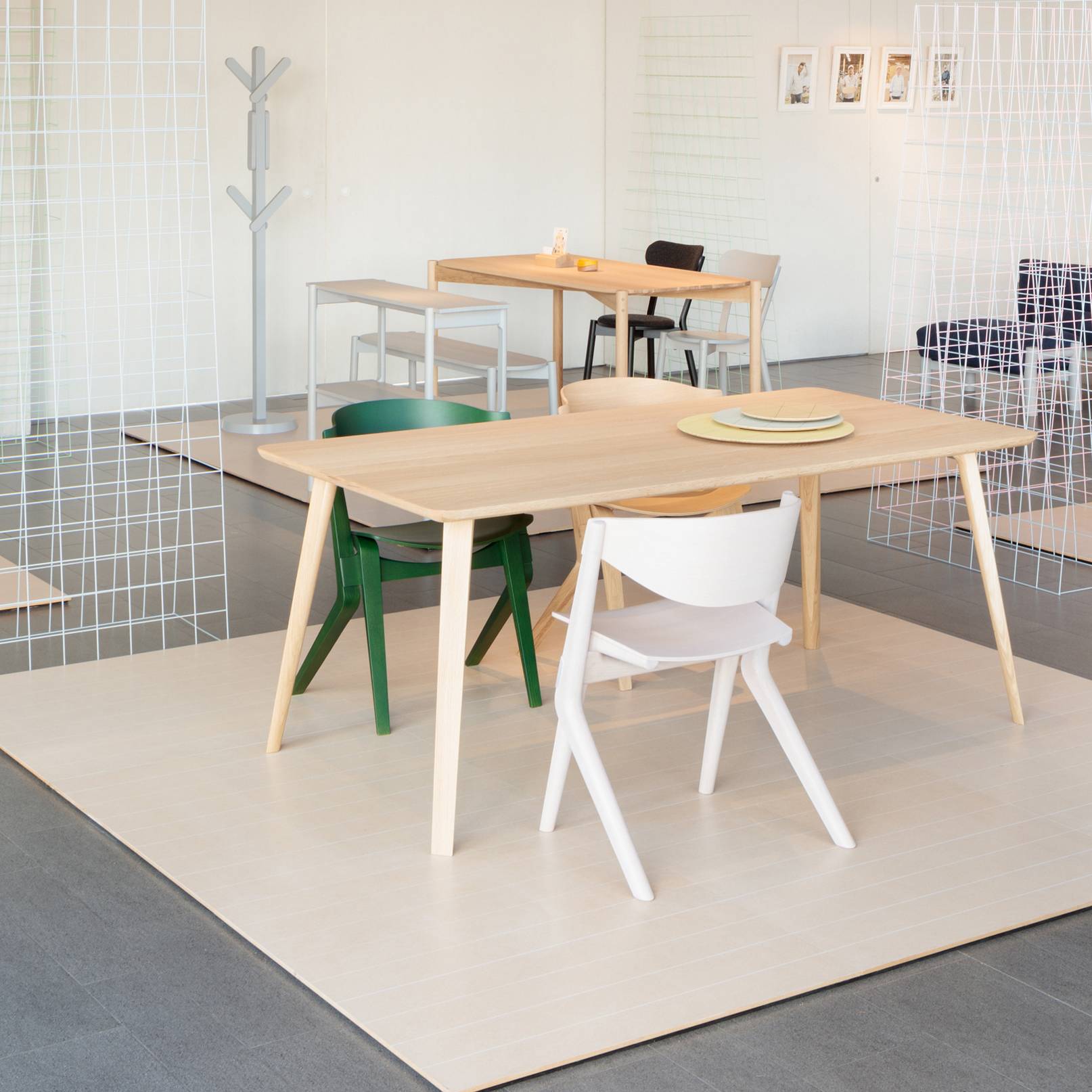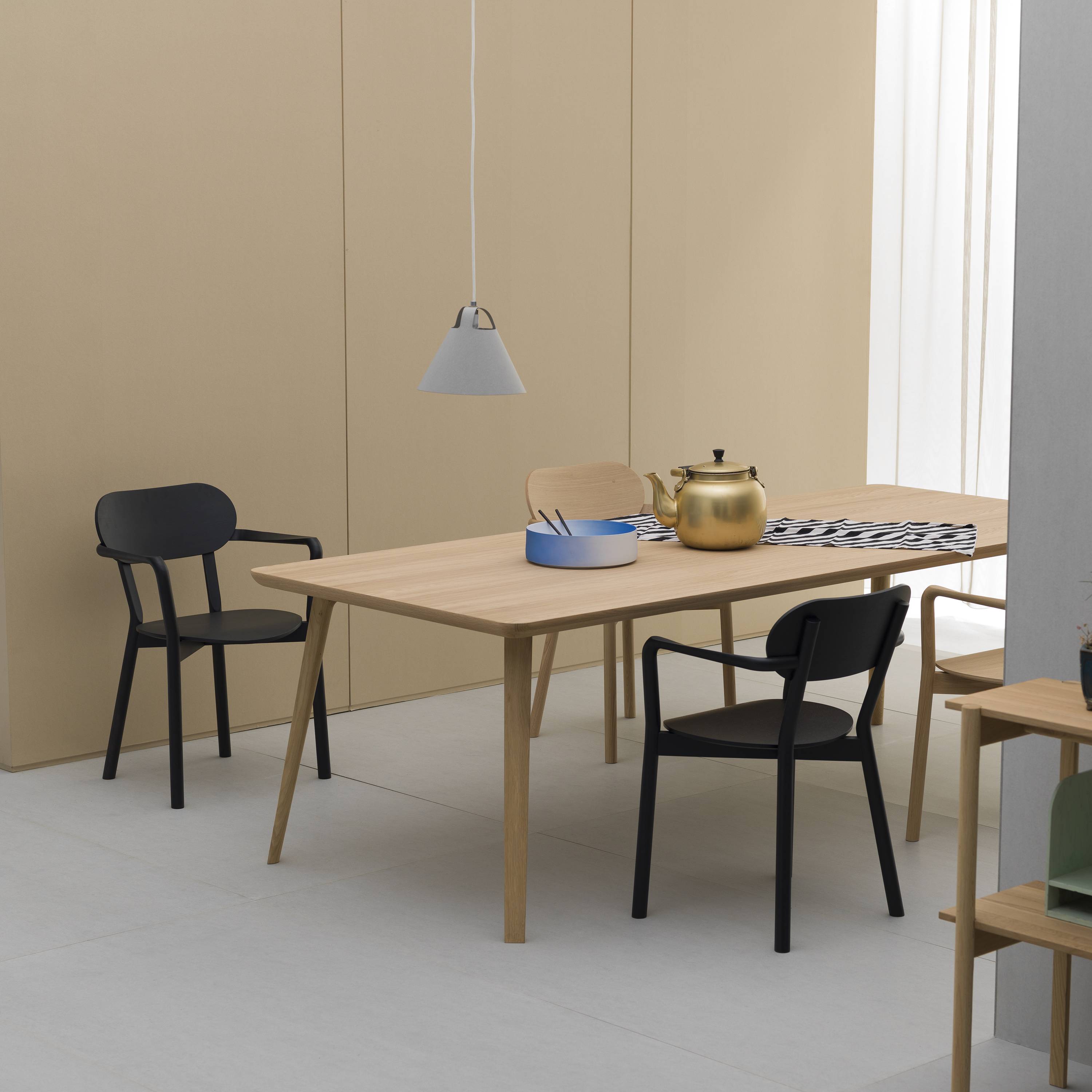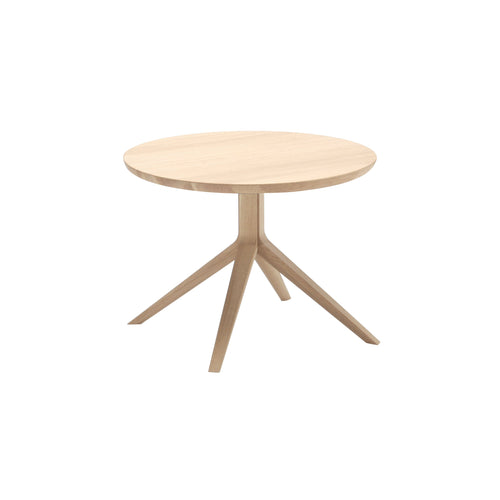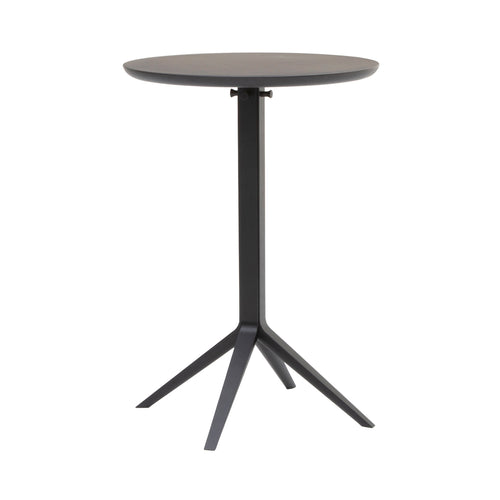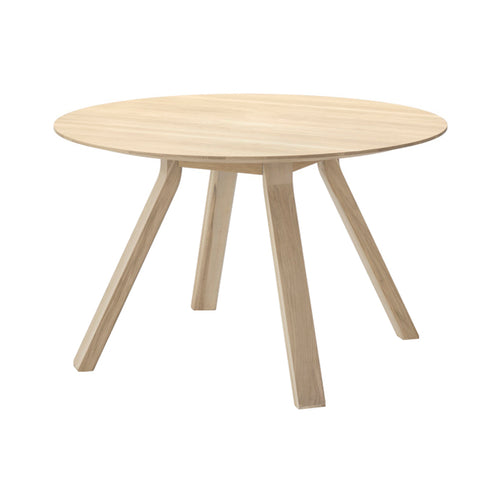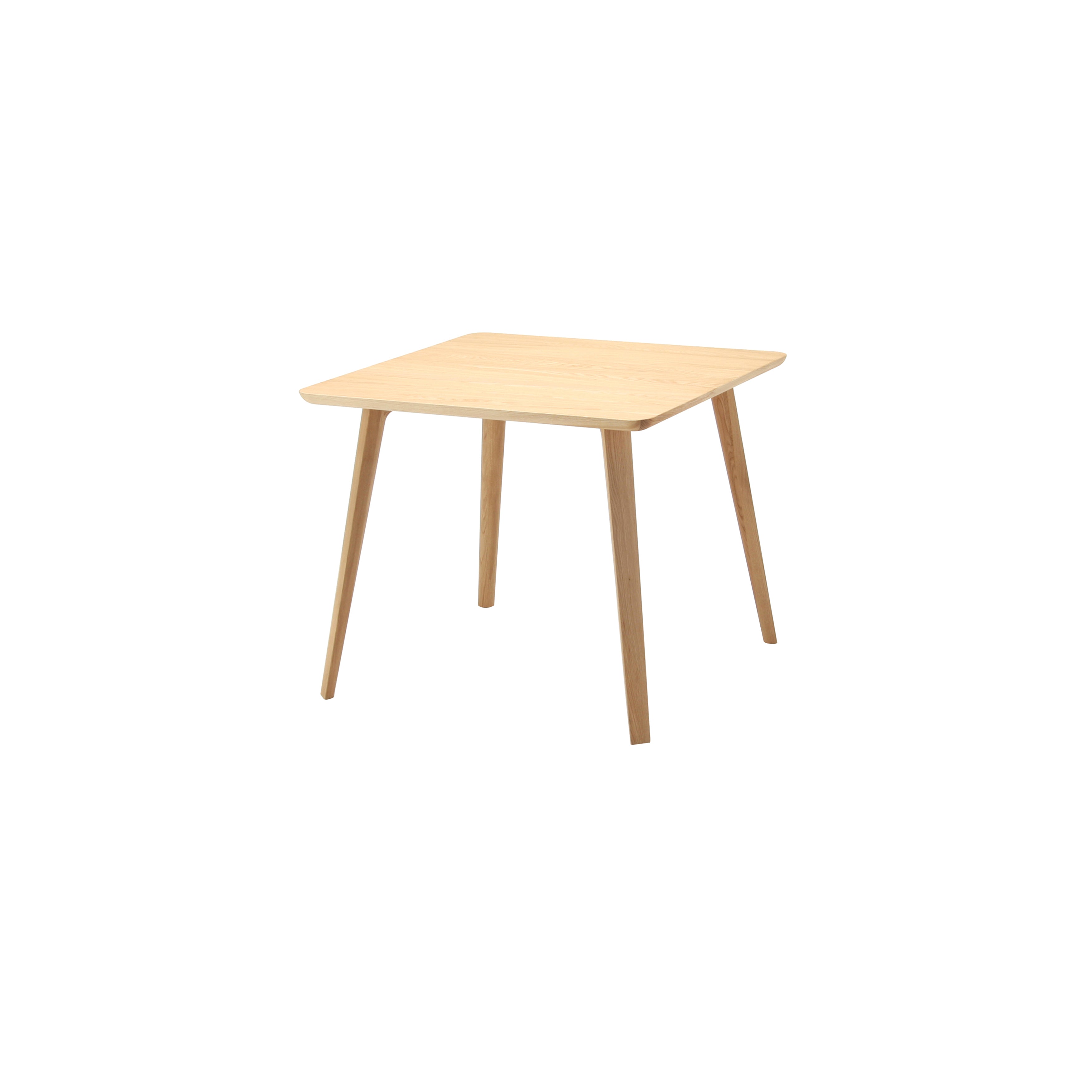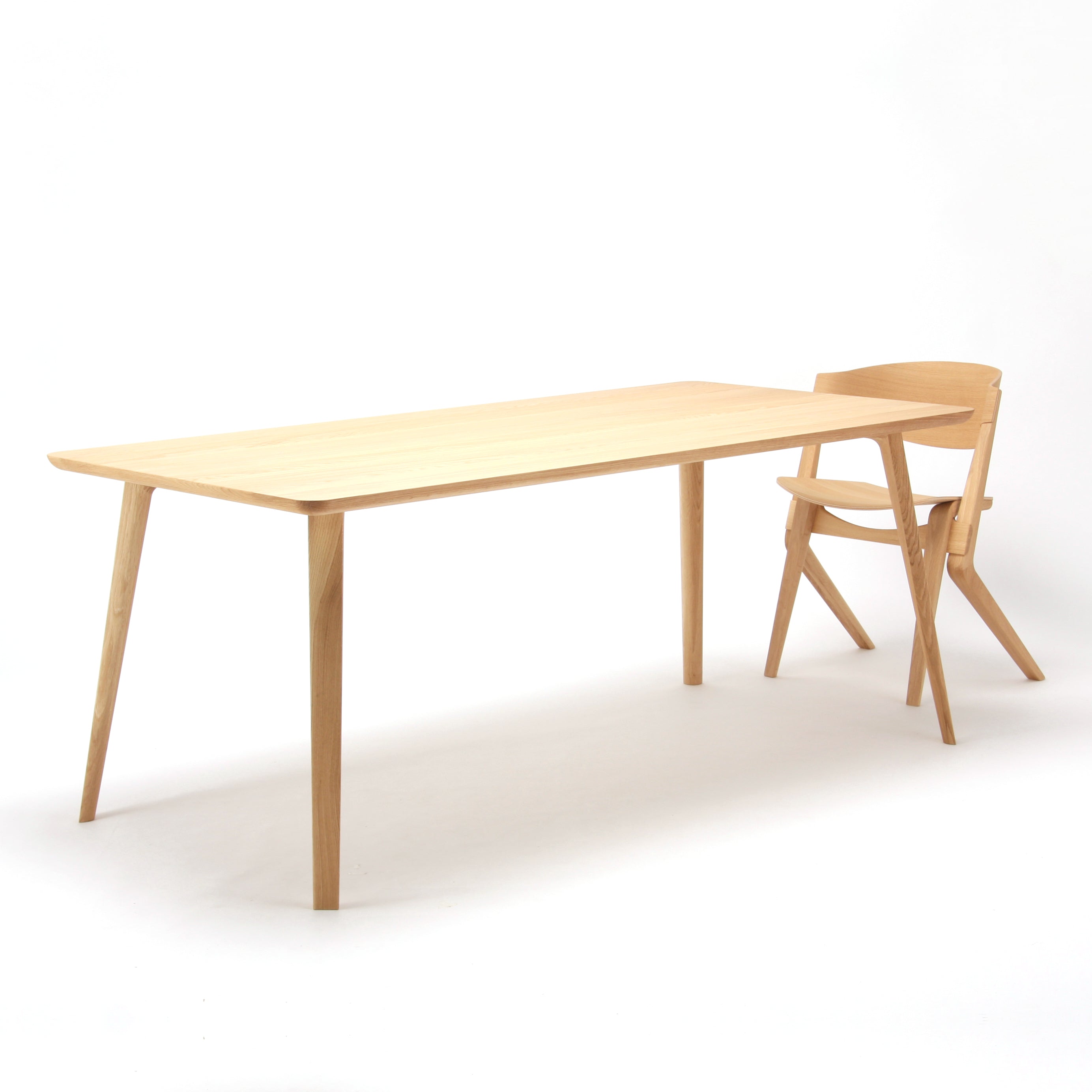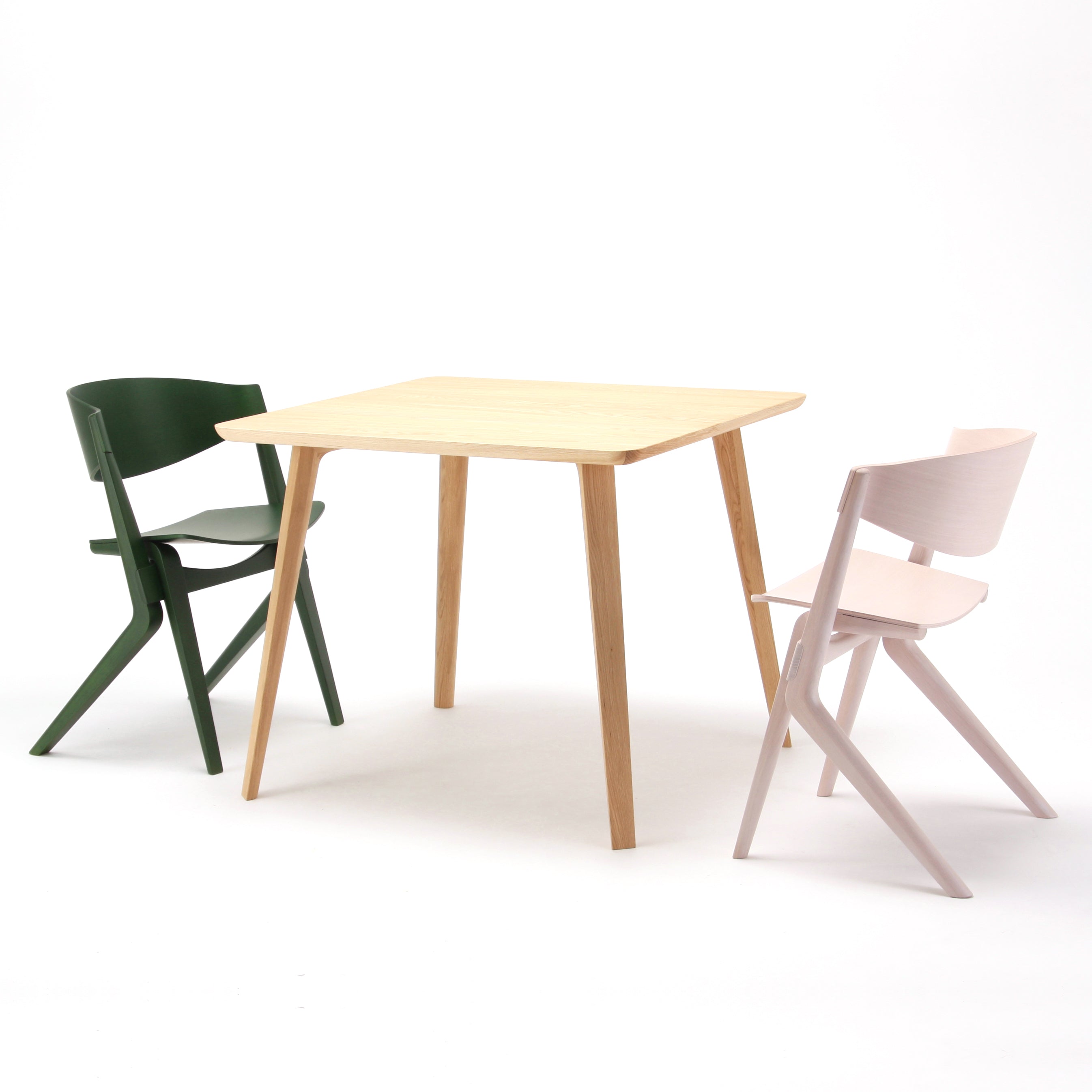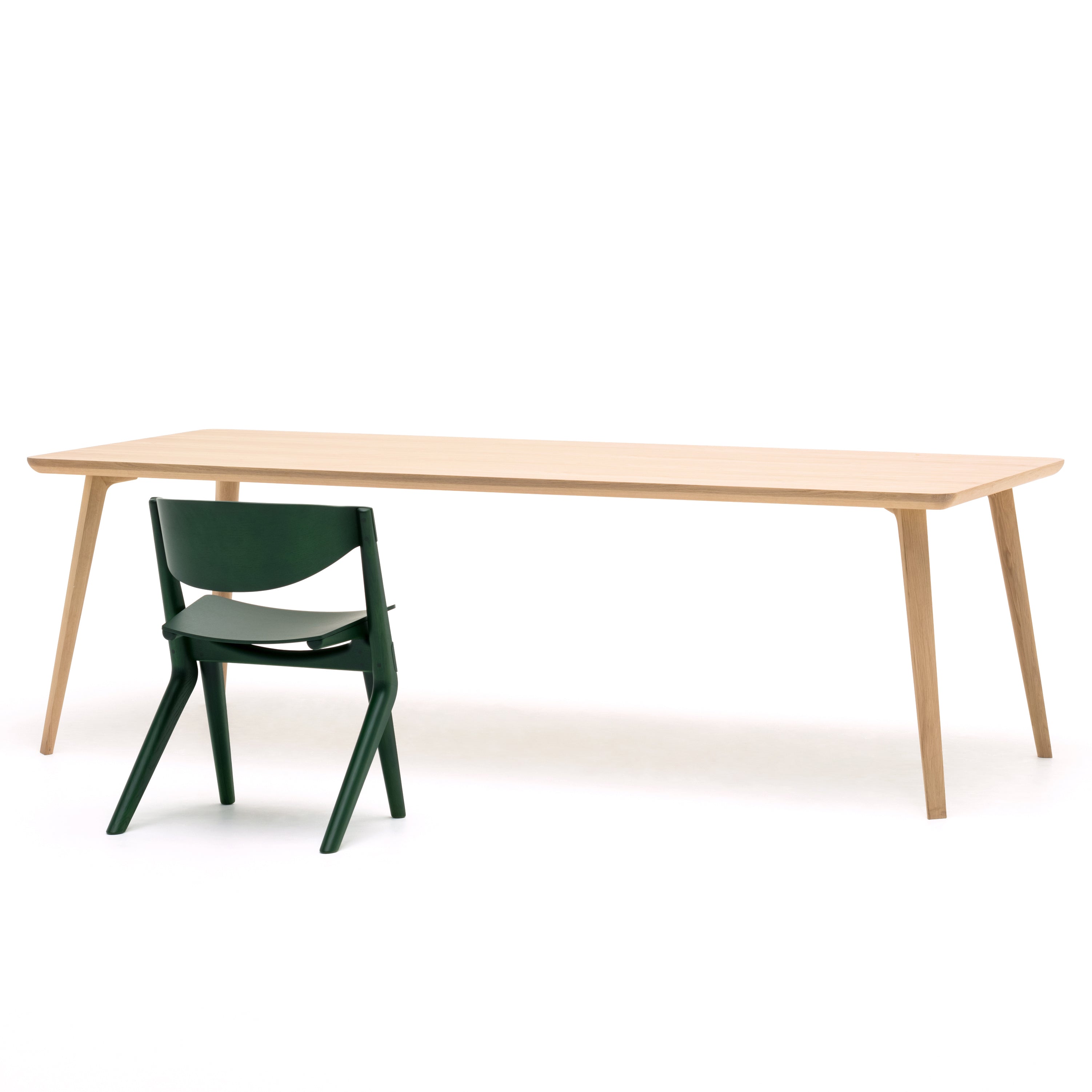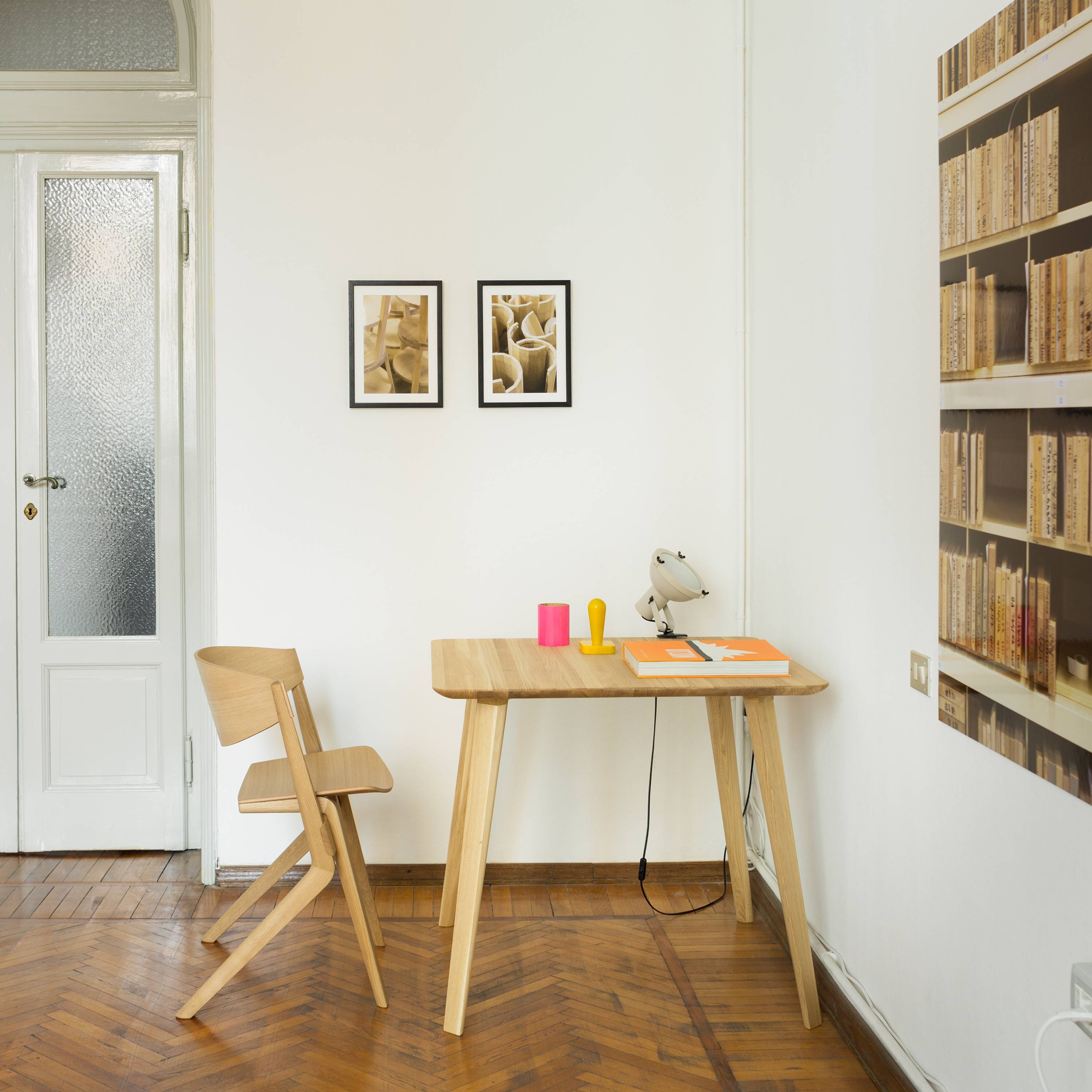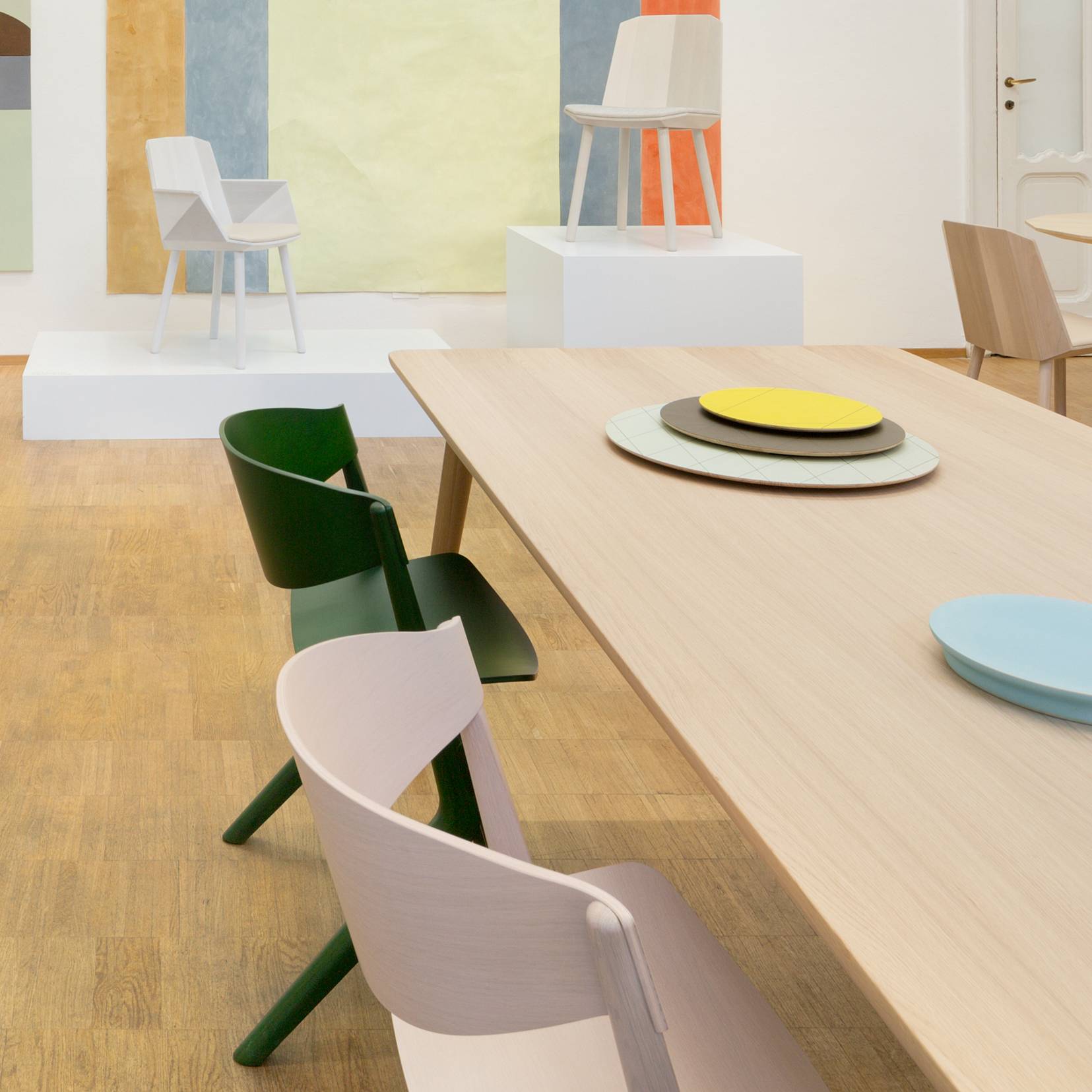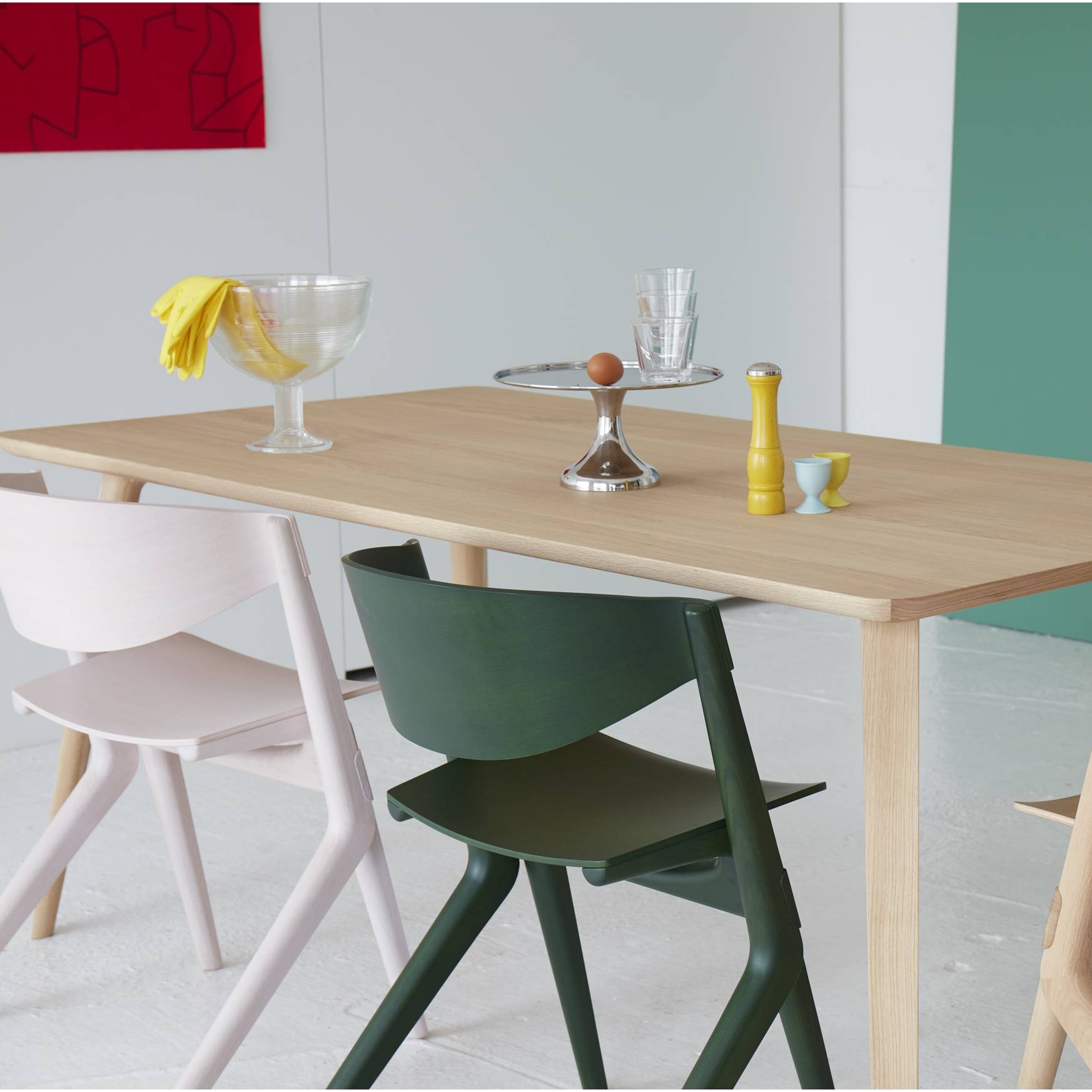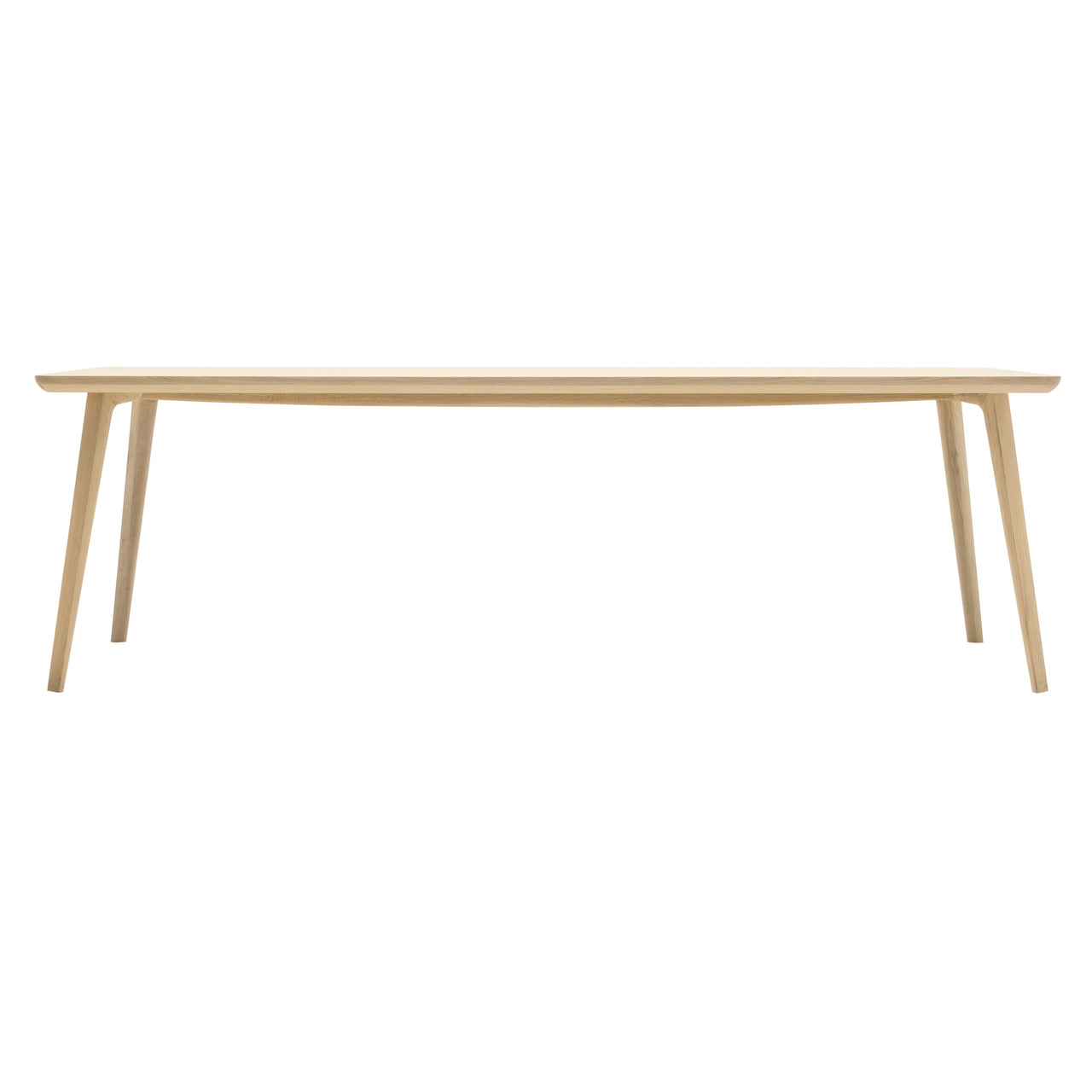
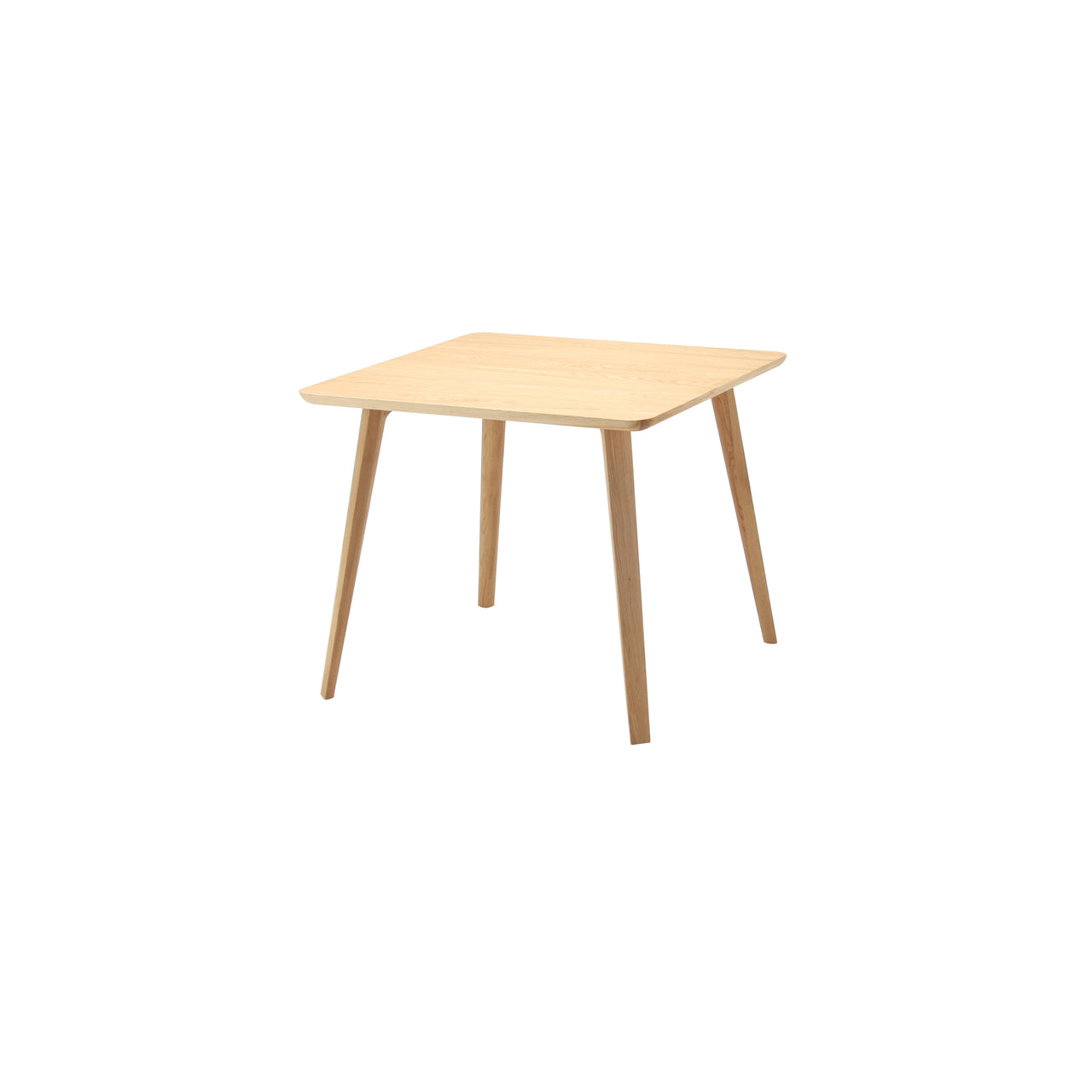
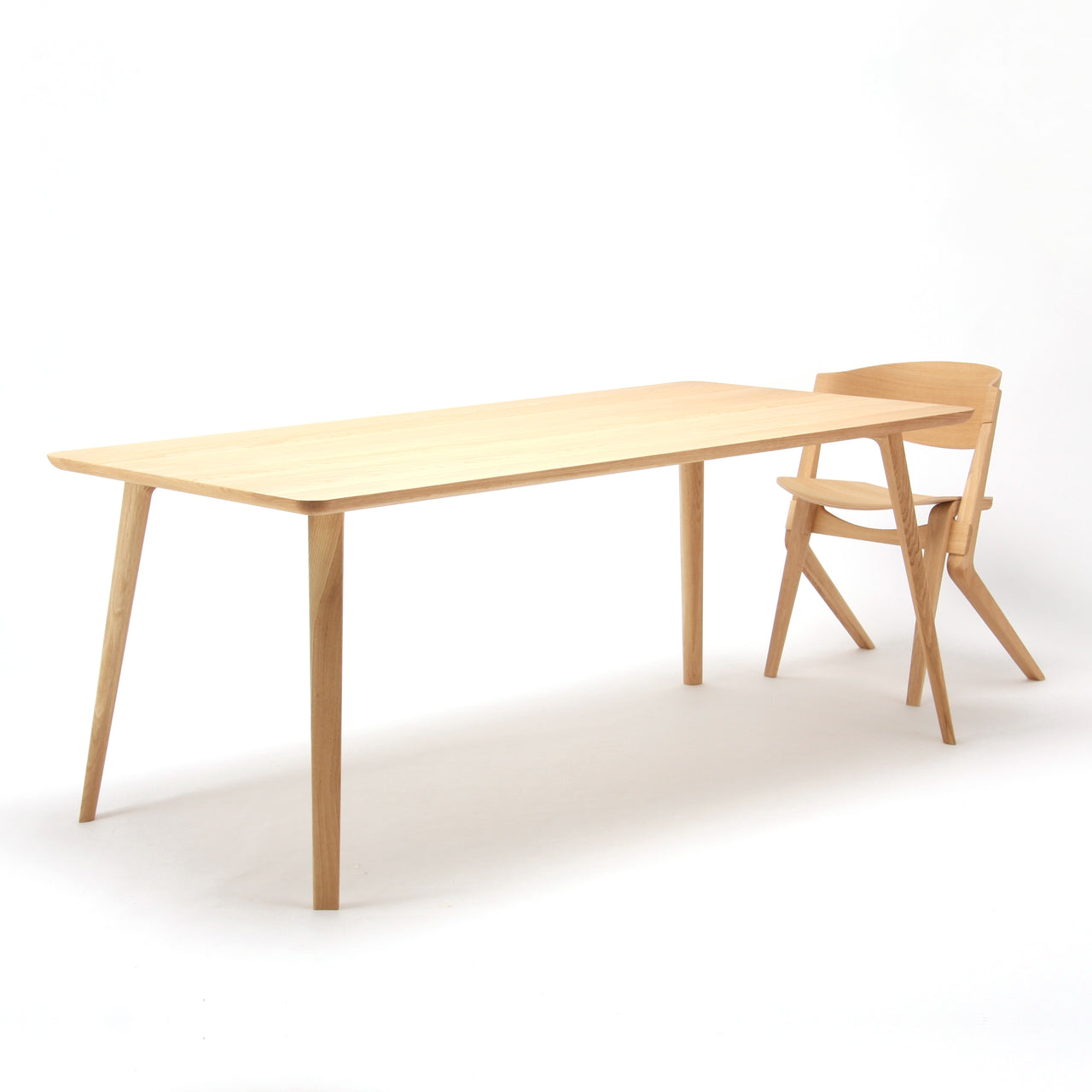
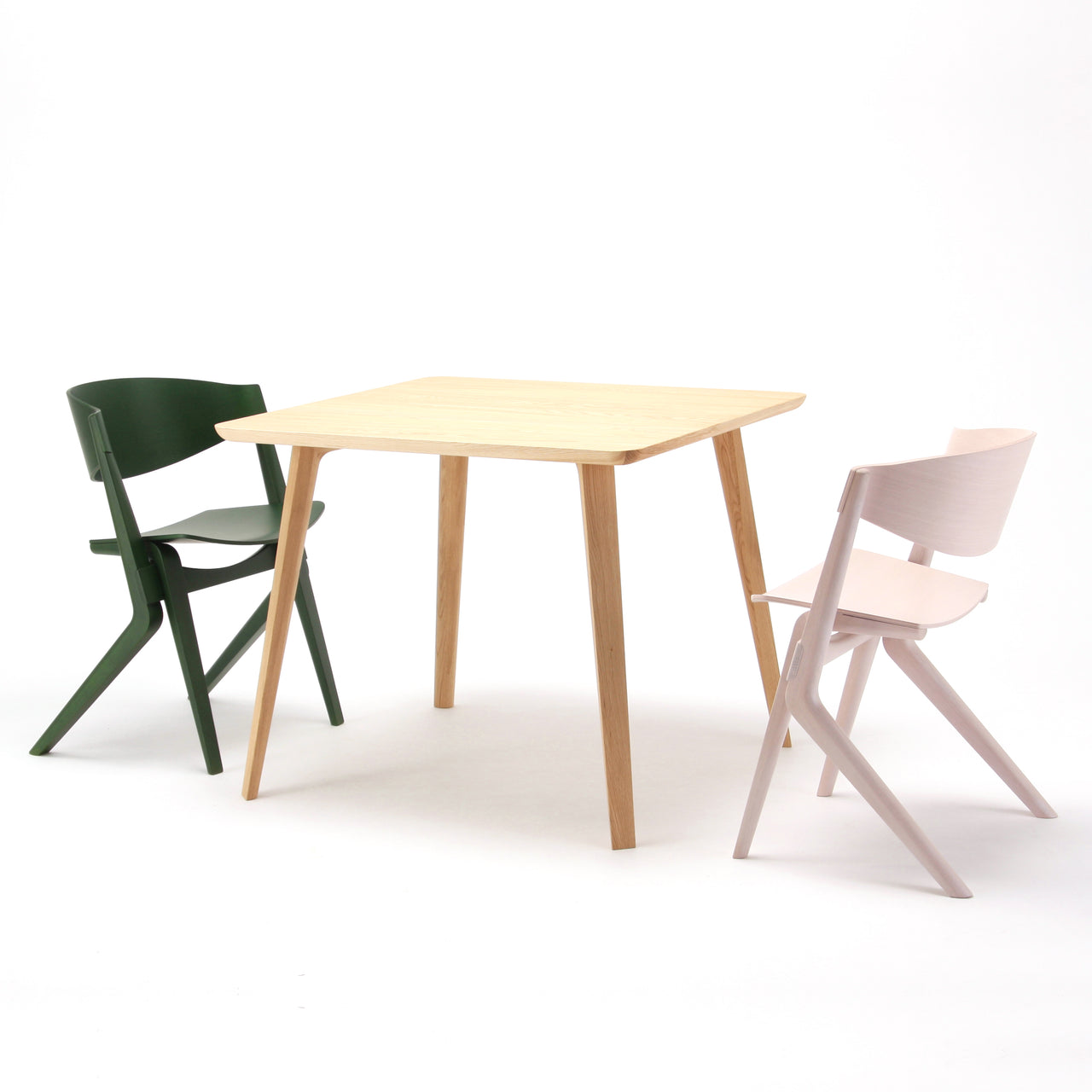

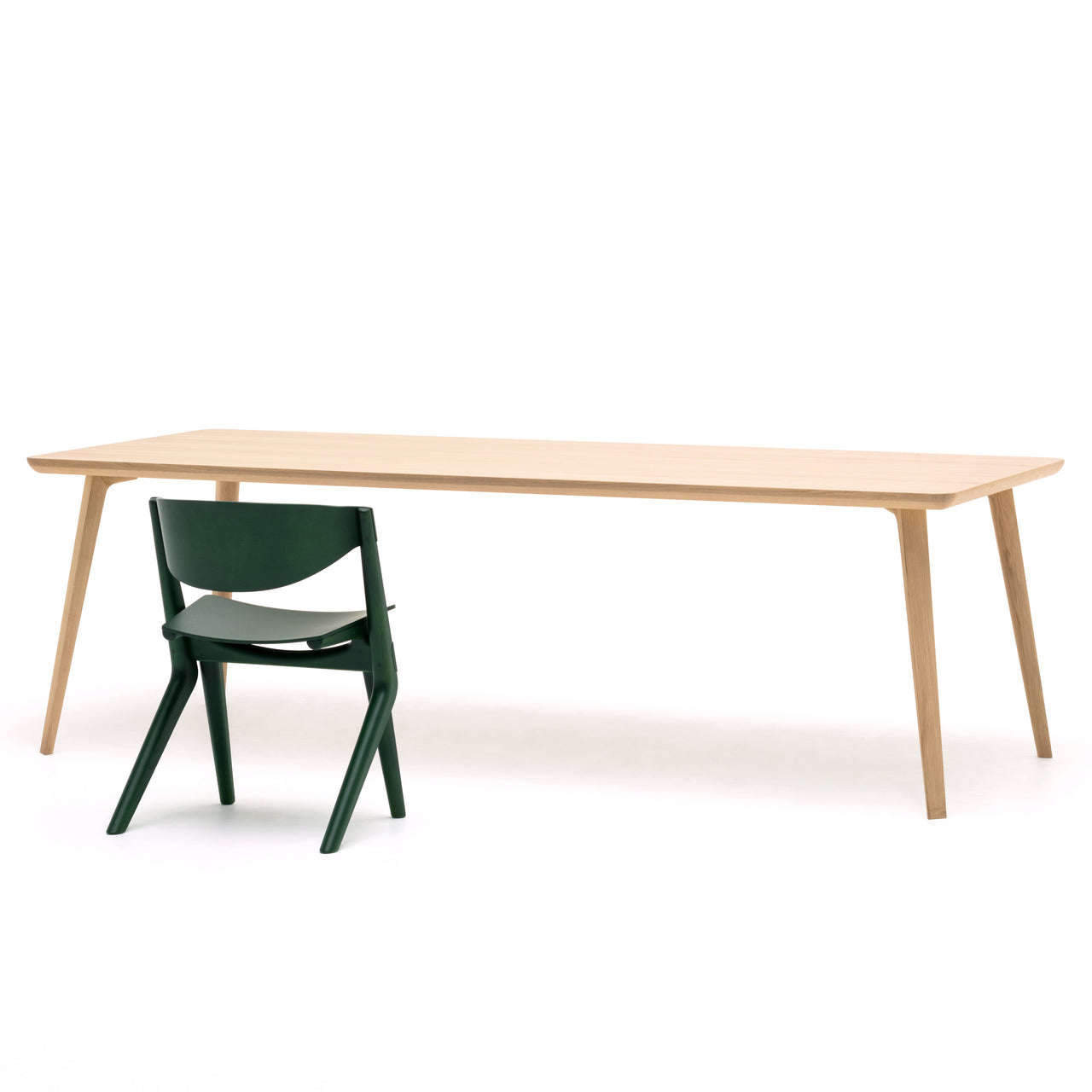

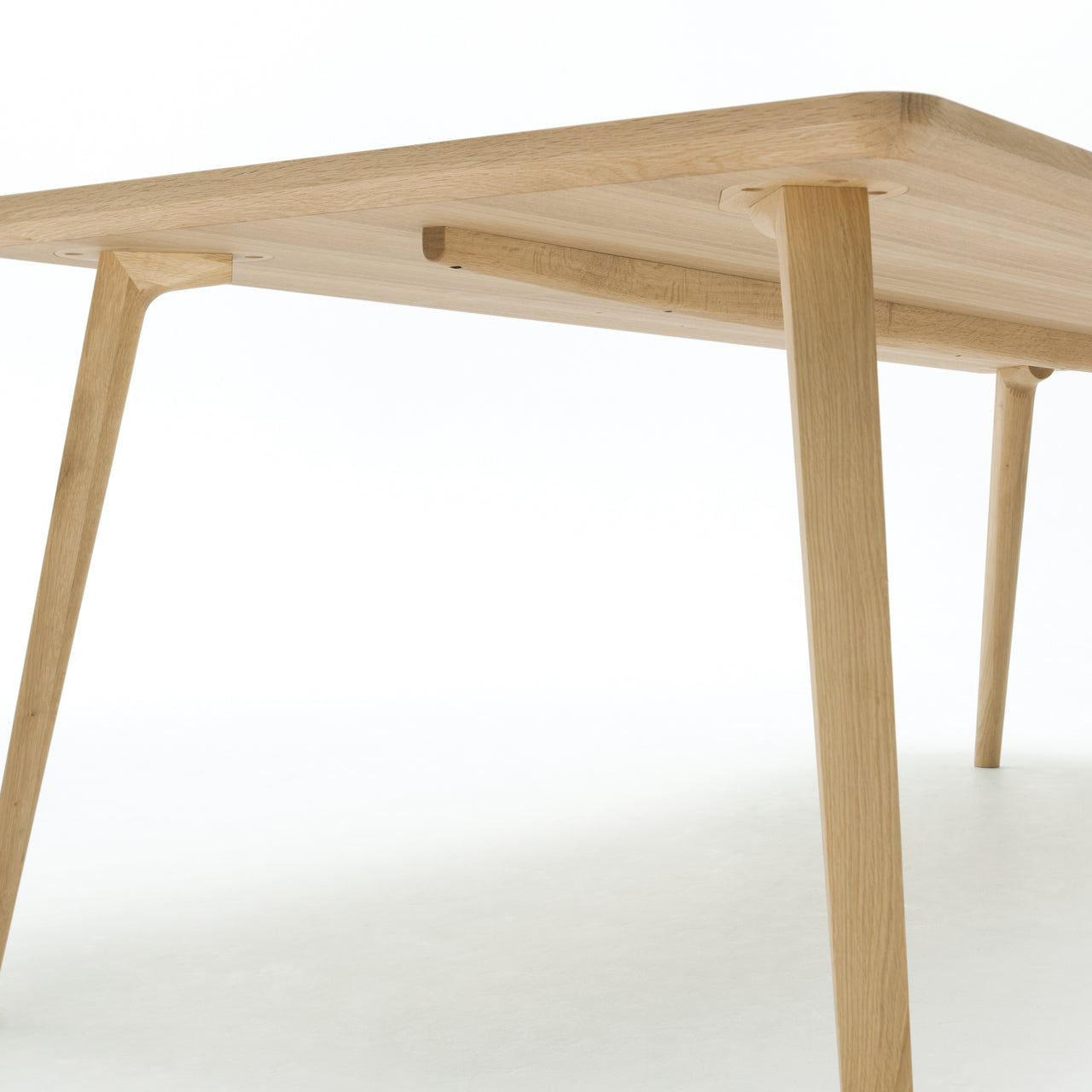
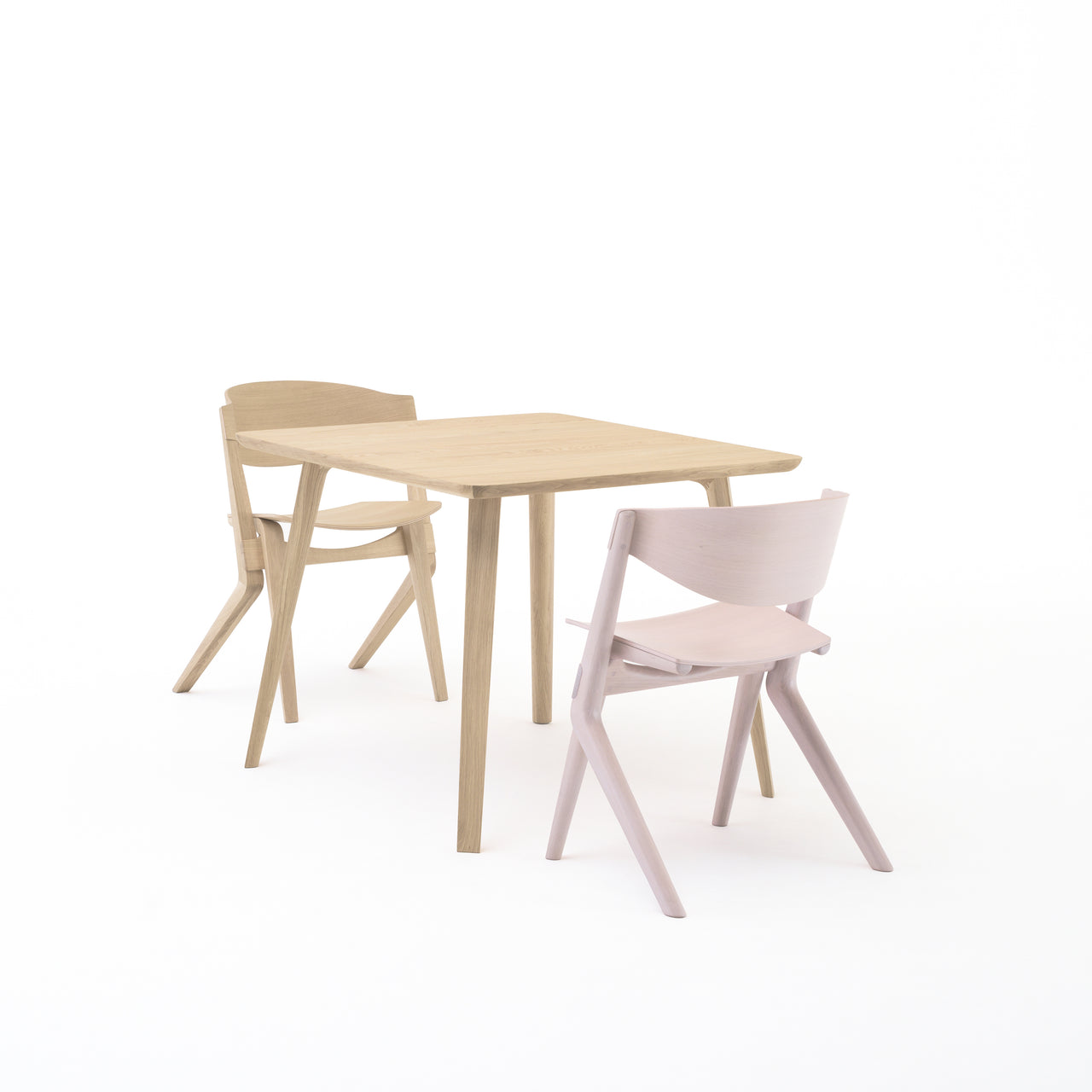

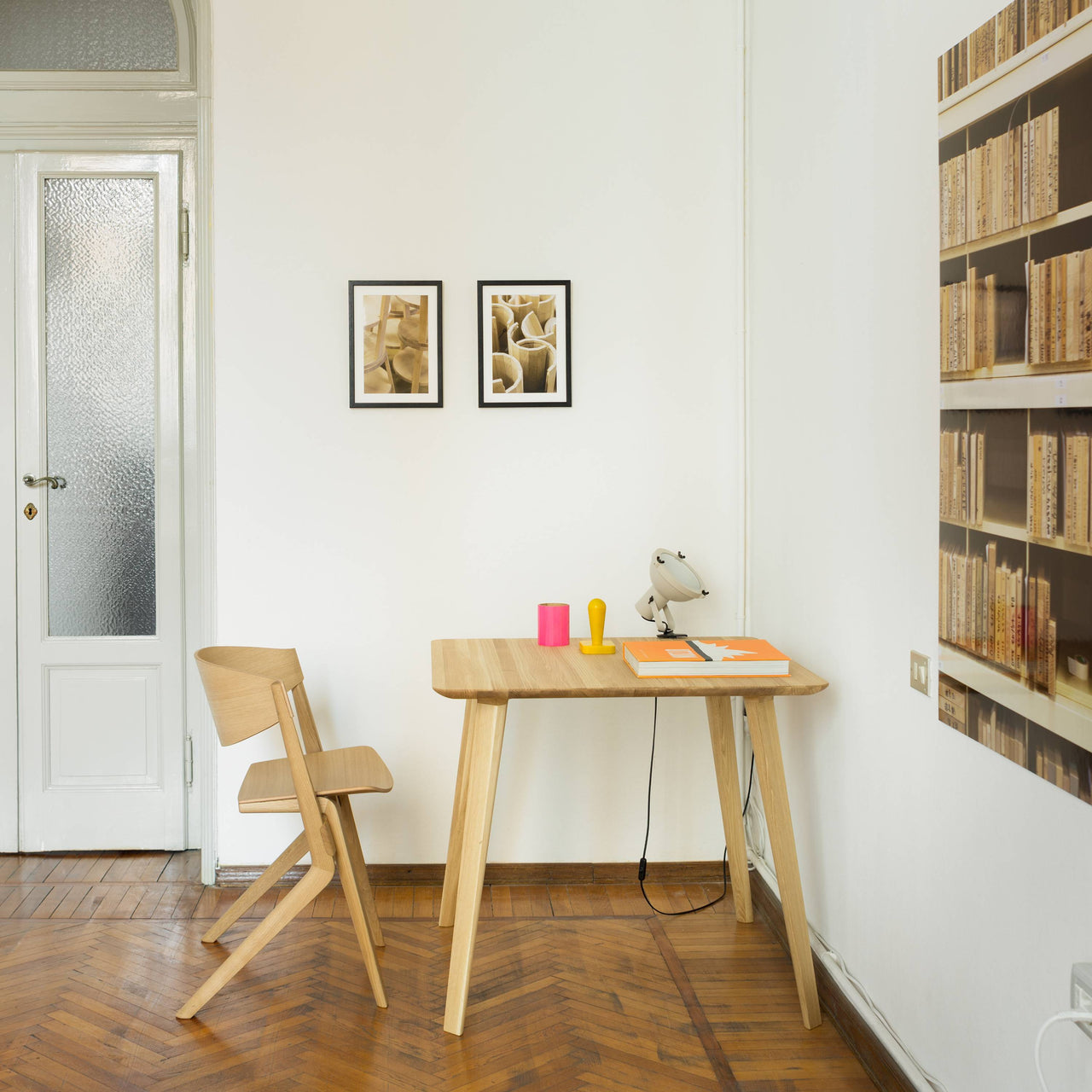
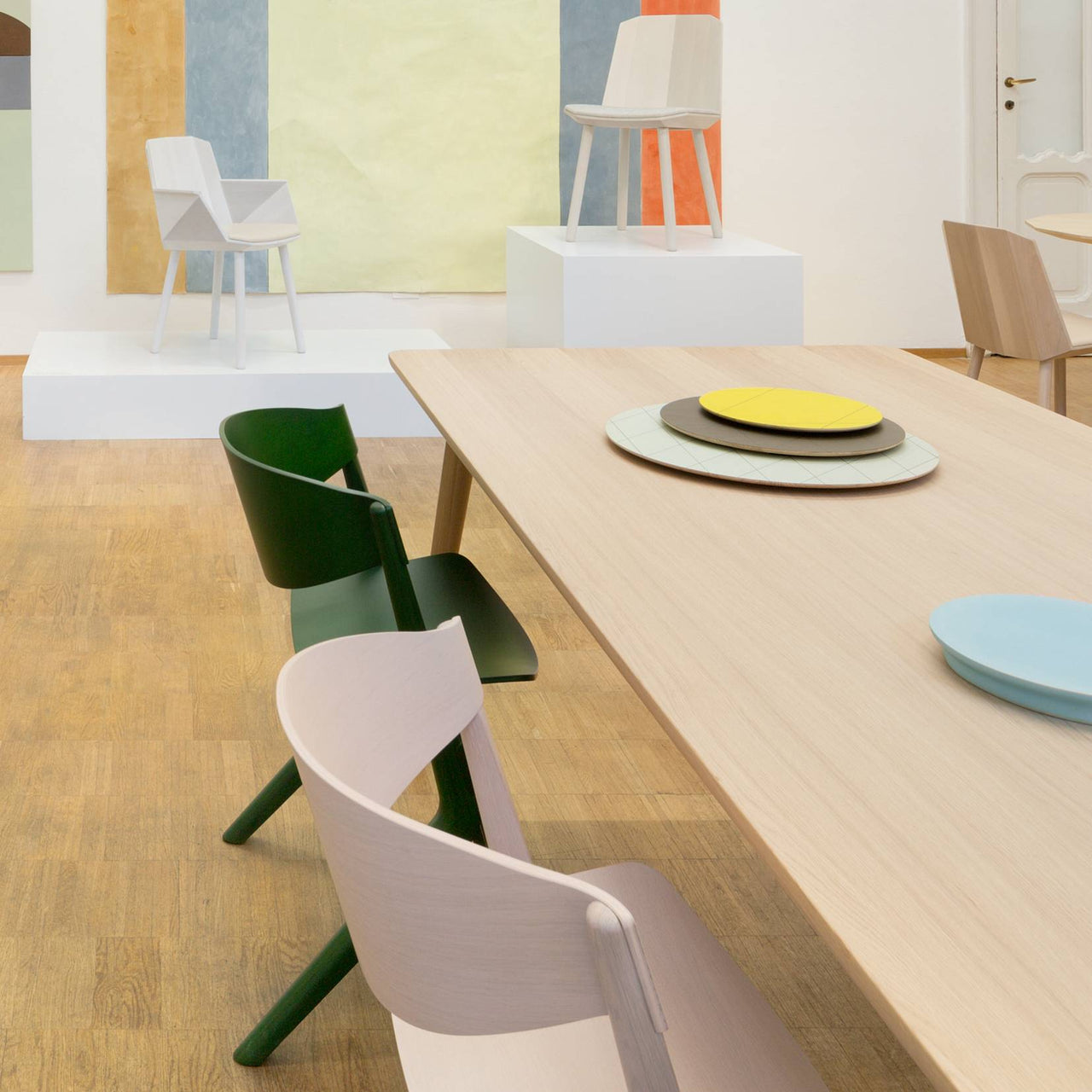




Karimoku New Standard × Christian Haas
Scout Table
$1,665
–
$2,860
$1,665
SKU: KNS-D344FBME
$2,105
SKU: KNS-D344MBME
$2,860
SKU: KNS-D344TBME
Description
German-born designer Christian Haas attaches the tabletop's modular legs individually so they are easily detachable for flat-pack transportation. A similar, environmentally prescient point of view imbues Japanese heritage brand Karimoku New Standard, who manufacture the table and companion chair in their pristine factories just east of Nagoya. With the aim of preserving and revitalizing the country's forests, eco-conscious production dictates the selection of hardwood from long underused low-diameter tress. Furthering the sense of timeless longevity is Karimoku's painstaking craftsmanship and the piece's matte natural finish in solid Japanese oak wood. Christian's similar care for craft continue to be honed in he adopted home now of Porto, Portugal.
Specifications
Size
- Small: 29.1" h x 35.4" w x 35.4" d (74x90x90cm)
- Medium: 29.1" h x 70.9" w x 35.4" d (74x180x90cm)
- Large: 29.1" h x 94.5" w x 39.4" d (74x240x100cm)
Material
Oak, veneered plywood
Brand
Karimoku New Standard
It has always been about the wood. Shohei Kato opened a small woodworking shop in 1940 from a longstanding timber firm he acquired in Kariya. The first letters of the town name combined with “moku,” as in “mokuzai” ( “wood”) provided the brand name. Furniture followed within 2 decades, along with several brands under the Karimoku umbrella. Then in 2009, with his grandson Hiroshi Kato as vice president, the Karimoku New Standard branch launched to develop works with international designers in the modern design arena.
The star roster includes Swedish studio TAF, the Swiss team Big-Game and Dutch duo Scholten & Baijings. Among them is David Glaettli, who also serves as KNS brand creative director and dubbed its credo as “high-tech and high-touch.” The highly skilled Japanese carpentry and hand-applied painting that are a part of the parent company heritage are integral to KNS. It also looks forward, revitalizing native forests by targeting undervalued, sustainably grown hardwoods. Advanced technologies have elevated the low-diameter chestnut, maple and oak trees, once turned into wood chips for paper pulp, into something of lasting beauty. The aim, notes Hiroshi, is “furniture that will be used and loved for more than 100 years.”
